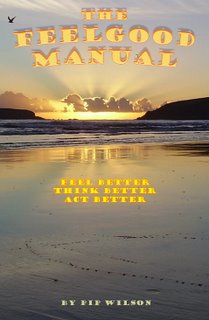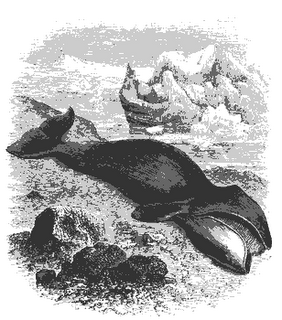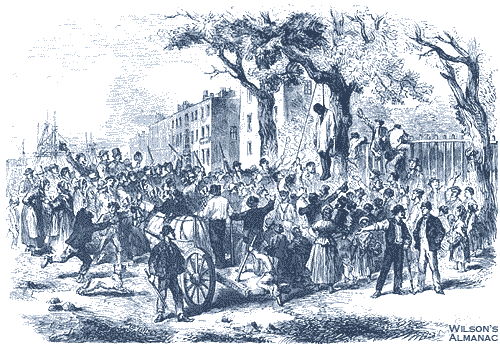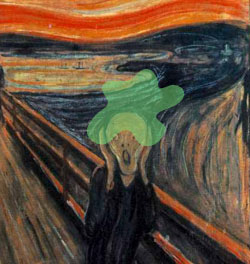
 1992 The Kiama Blowhole Tragedy
1992 The Kiama Blowhole Tragedy The north coast of the state of New South Wales, Australia, where your almanac is produced, is very beautiful, but for picture postcard scenery, take a drive south from Sydney along the Prince’s Highway. After a few hours of picturesque countryside and coastline and you will arrive at the small town of Kiama, famous for a spectacular natural phenomenon.
The Kiama Blowhole is a natural cavern or chasm at Blowhole Point, on a seaside cliff near town. When the seas run from the south-east, a spectacular plume of water erupts as high as 60 metres (about 65 yards). Something like 600,000 people a year come to the Blowhole to marvel at the sight.
The British naval surgeon and explorer of Australia, George Bass, was the first European to see this sight, when he anchored his whale boat in the sheltered bay, now known as Kiama Harbour, in December, 1797.
Bass wrote: "The earth for a considerable distance round in the form approaching a circle seemed to have given way; it was now a green slope … Towards the centre was a deep ragged hole of about 25 to 30 feet in diameter and on one side of it the sea washed in through a subterraneous passage...with a most tremendous noise ...”"
The Blowhole and the adjacent lighthouse have long been a popular tourist attraction. In January, 1889 a tightrope walker named Charles Jackson attracted large crowds to see his daring crossings of the mouth of the chasm.
Tragedy strikes Kiama Kiama had been the site of a tragedy on February 22, 1949 when a ship called the
Bombo, a steel vessel of 640 tons built in Leith, Scotland in 1930 especially for carrying blue metal from Kiama to Sydney, sank in a gale with the loss of all but two of her crew. The Blowhole itself has also been the location of a number of suicides. In 1992, tragedy struck the town again, this time at the Blowhole. And it was not to be the last occasion.
On Saturday, July 11, 1992, 26-year-old Afghan refugee Fared Cina, his wife Angella, 28 and their four-year-old daughter Baran, were standing by the blowhole as so many have before and since. Enjoying the “whoosh!” of the famous blowhole with the the Cina family were Mrs Cina’s nephew Arash, aged 7.
Nasarin Zobair, 37, her daughter Kahlida, 21 and eleven-year-old son Mustafa were also watching Nature’s show with their friends, when the water rose up with tremendous force, knocking all seven of them into the chasm and rushing them out to sea, with three relatives left standing hopelessly nearby. Mr Cina’s body was never recovered.
At the time I had very close associations with Australia’s relatively small community of Afghan people, most of them refugees who suffered unspeakable abuses under the Communists and Taliban, and I remember well the pall of grief that fell over this already benighted community.
Tragedy strikes againTragically, on April 10, 1997, the bodies of Sydney cousins Masuda Khushbakht, 16, and Khatera Nawabi, 20, both relatives of four of the people who died in the blowhole in 1992, were found floating in the ocean off Kiama ...
Tagged: australia, history, refugees


 "I spent 33 years and four months in active military service and during that period I spent most of my time as a high class muscle man for Big Business, for Wall Street and the bankers. In short, I was a racketeer, a gangster for capitalism."
"I spent 33 years and four months in active military service and during that period I spent most of my time as a high class muscle man for Big Business, for Wall Street and the bankers. In short, I was a racketeer, a gangster for capitalism."

 1893 Australia: Next door to
1893 Australia: Next door to 
 Major
Major 
 The pilgrimage to Compostela became almost as popular and important in medieval Europe as that to Jerusalem. Because of this, seventeen English peers and eight baronets have scallop shells in their arms as heraldic charges. Note that it is not only in Europe that scallops and pilgrimages go together. In 19th-Century Japan, too, certain pilgrims adorned themselves with scallop shells.
The pilgrimage to Compostela became almost as popular and important in medieval Europe as that to Jerusalem. Because of this, seventeen English peers and eight baronets have scallop shells in their arms as heraldic charges. Note that it is not only in Europe that scallops and pilgrimages go together. In 19th-Century Japan, too, certain pilgrims adorned themselves with scallop shells. An international literary parody contest, the competition honours the memory of Victorian novelist
An international literary parody contest, the competition honours the memory of Victorian novelist  In ancient Latvia, Jekaupa Diena ('Jacob's day') was a festival held on July 24 – the eve of St James (
In ancient Latvia, Jekaupa Diena ('Jacob's day') was a festival held on July 24 – the eve of St James (
 "
"

 1376 The Pied Piper came to Hamelin (Hameln), a town in Lower Saxony, Germany, and led the children out of town.
1376 The Pied Piper came to Hamelin (Hameln), a town in Lower Saxony, Germany, and led the children out of town.
 1969 Apollo Program: Apollo 11 landed on the Moon and
1969 Apollo Program: Apollo 11 landed on the Moon and 

 "Almost 6000 Iraqi civilians were killed in the past two months as casualties rise.
"Almost 6000 Iraqi civilians were killed in the past two months as casualties rise. Wilgefortis (Comera; Cumerana; Dignefortis; Eutropia; Hulfe; Komina; Kummernis; Kümmernis; Liberata; Librada; Lisvrade; Livrade; Ontcommene; Ontcommer; Ontkommena; Reginfledis; Uncumber; Virgo-Fortis), daughter of the King of Portugal, made a vow of chastity. When her father tried to make her marry she prayed for deliverance and immediately grew a copious beard. Her suitors fled and her father had her crucified.
Wilgefortis (Comera; Cumerana; Dignefortis; Eutropia; Hulfe; Komina; Kummernis; Kümmernis; Liberata; Librada; Lisvrade; Livrade; Ontcommene; Ontcommer; Ontkommena; Reginfledis; Uncumber; Virgo-Fortis), daughter of the King of Portugal, made a vow of chastity. When her father tried to make her marry she prayed for deliverance and immediately grew a copious beard. Her suitors fled and her father had her crucified.


 Today, thousands of Voudon (Voodoo) believers from Haiti and abroad will make a pilgrimage to the sacred waters of Saut D’Eau, a waterfall where Erzulie Freda – the Voudon spirit of love, art, romance and sex – appeared twice in the 19th Century.
Today, thousands of Voudon (Voodoo) believers from Haiti and abroad will make a pilgrimage to the sacred waters of Saut D’Eau, a waterfall where Erzulie Freda – the Voudon spirit of love, art, romance and sex – appeared twice in the 19th Century.

 Feast day of St Swithin (Swithun), England, confessor, patron of Winchester
Feast day of St Swithin (Swithun), England, confessor, patron of Winchester
 1858 Emmeline Pankhurst (d.
1858 Emmeline Pankhurst (d. 
 "A human rights lawyer and a former member of the Canadian cabinet have accused prison authorities in China of killing Falungong dissidents for their organs. Lawyer David Matas and Canada's former secretary of state for Asia and the Pacific, David Kilgour, spent two months investigating the claims. The Chinese government has denied similar allegations in the past, pointing to a new law prohibiting the buying and selling of human organs, with a proviso also that written consent must be given by donors. "
"A human rights lawyer and a former member of the Canadian cabinet have accused prison authorities in China of killing Falungong dissidents for their organs. Lawyer David Matas and Canada's former secretary of state for Asia and the Pacific, David Kilgour, spent two months investigating the claims. The Chinese government has denied similar allegations in the past, pointing to a new law prohibiting the buying and selling of human organs, with a proviso also that written consent must be given by donors. "




 1992 The Kiama Blowhole Tragedy
1992 The Kiama Blowhole Tragedy  1881 Sixteen-year-old Prince George (1865 - 1936), the future King
1881 Sixteen-year-old Prince George (1865 - 1936), the future King 











 In the
In the 


 Just for one week these must-have downloads are available at
Just for one week these must-have downloads are available at  1888 Three young women were dismissed from the Bryant and May factory in East London, England, for exposing the appalling working conditions there. The other 672 women labourers went out in solidarity. The 'Matchgirls' Strike' itself was unsuccessful but the unity generated nationally was unprecedented and galvanised the labor movement worldwide.
1888 Three young women were dismissed from the Bryant and May factory in East London, England, for exposing the appalling working conditions there. The other 672 women labourers went out in solidarity. The 'Matchgirls' Strike' itself was unsuccessful but the unity generated nationally was unprecedented and galvanised the labor movement worldwide. "The Fourth of July" is commonly associated with fireworks, barbecues, picnics and other public celebratory events.
"The Fourth of July" is commonly associated with fireworks, barbecues, picnics and other public celebratory events.
 Through
Through  "Now to that perennial question that keeps on appearing in the British tabloids on quiet news days - does the Royal Family represent value for money?
"Now to that perennial question that keeps on appearing in the British tabloids on quiet news days - does the Royal Family represent value for money?







